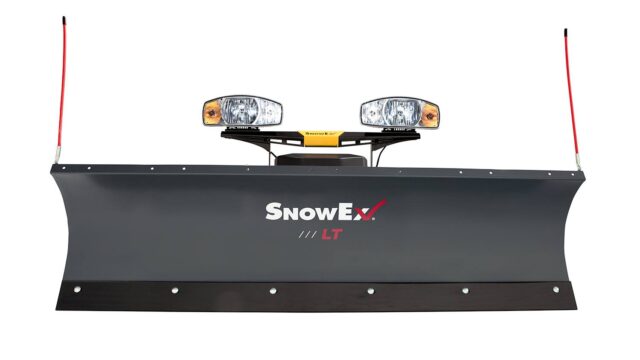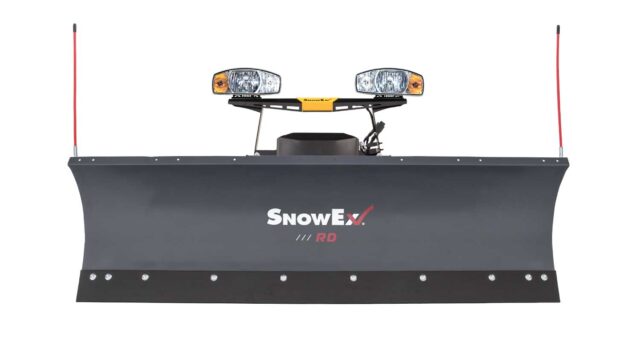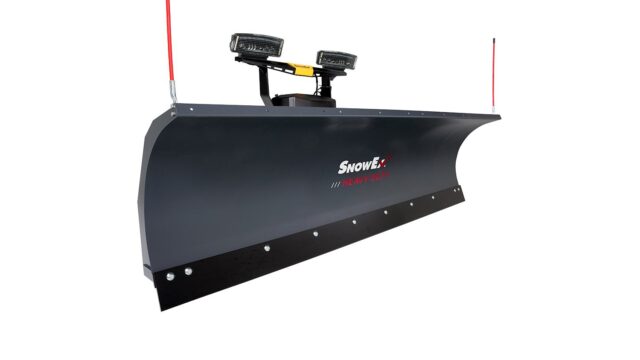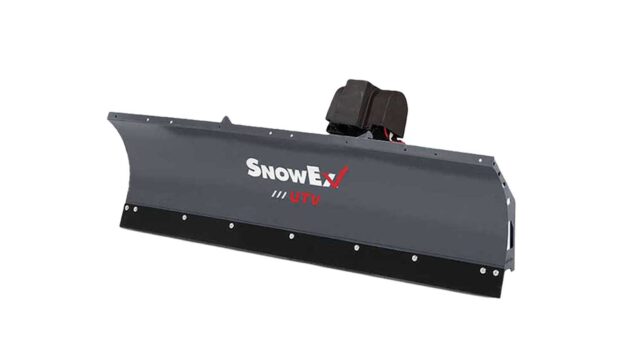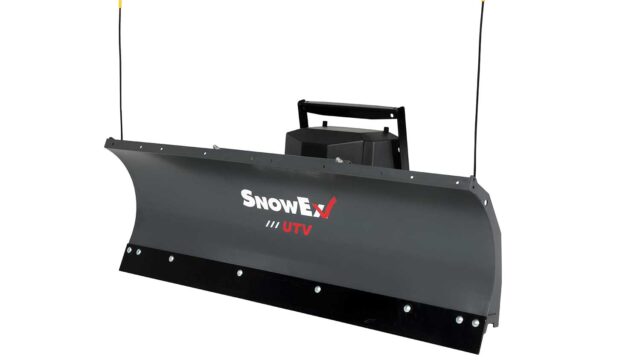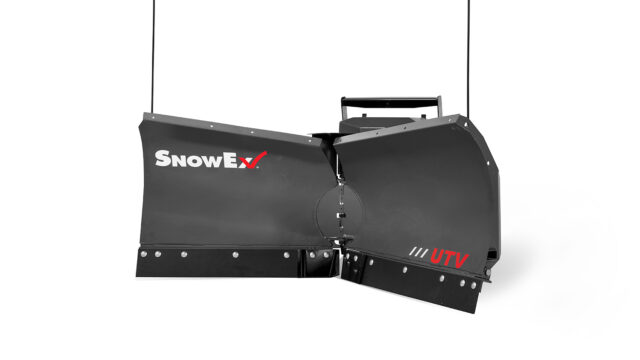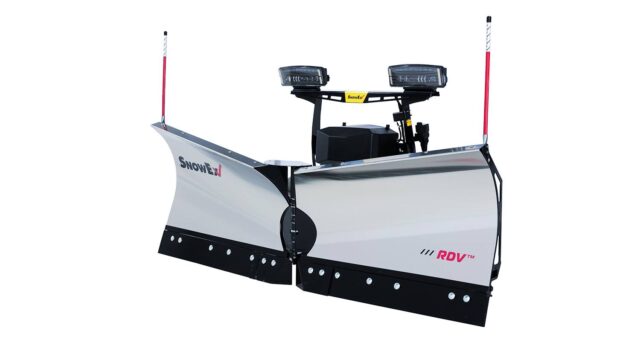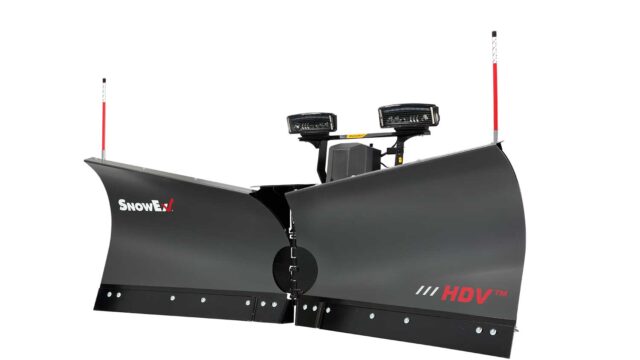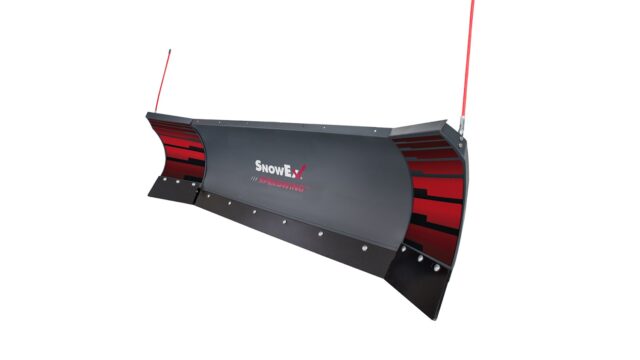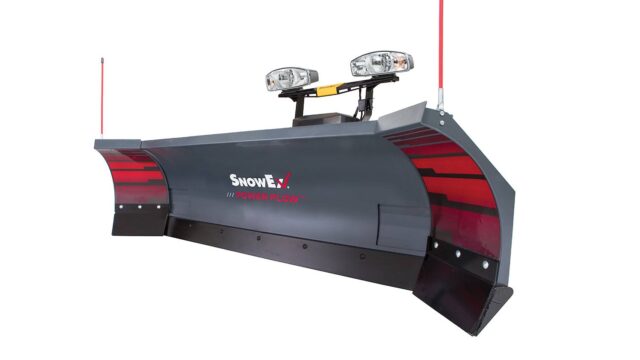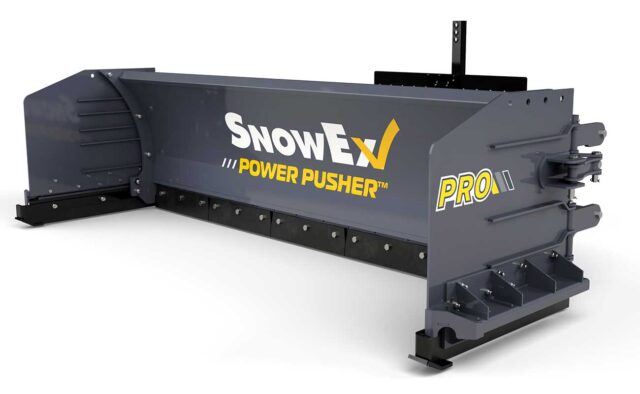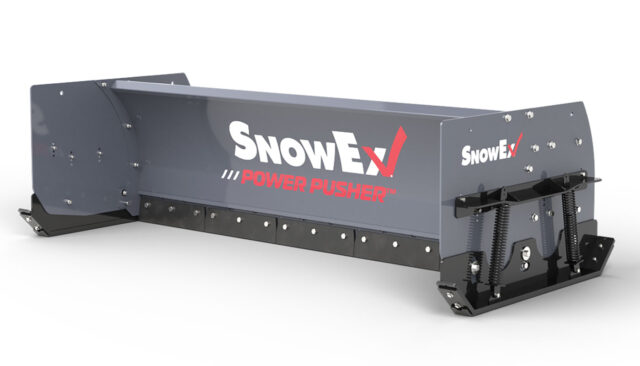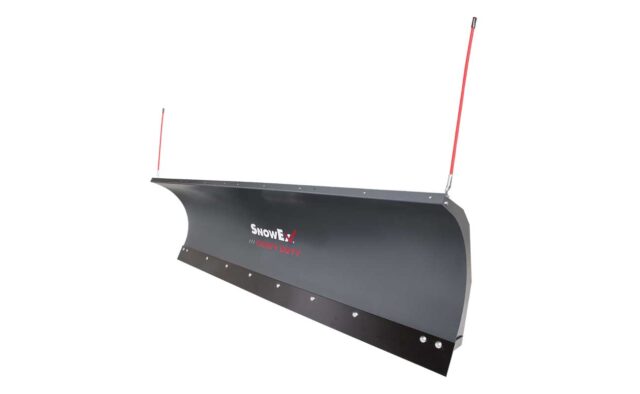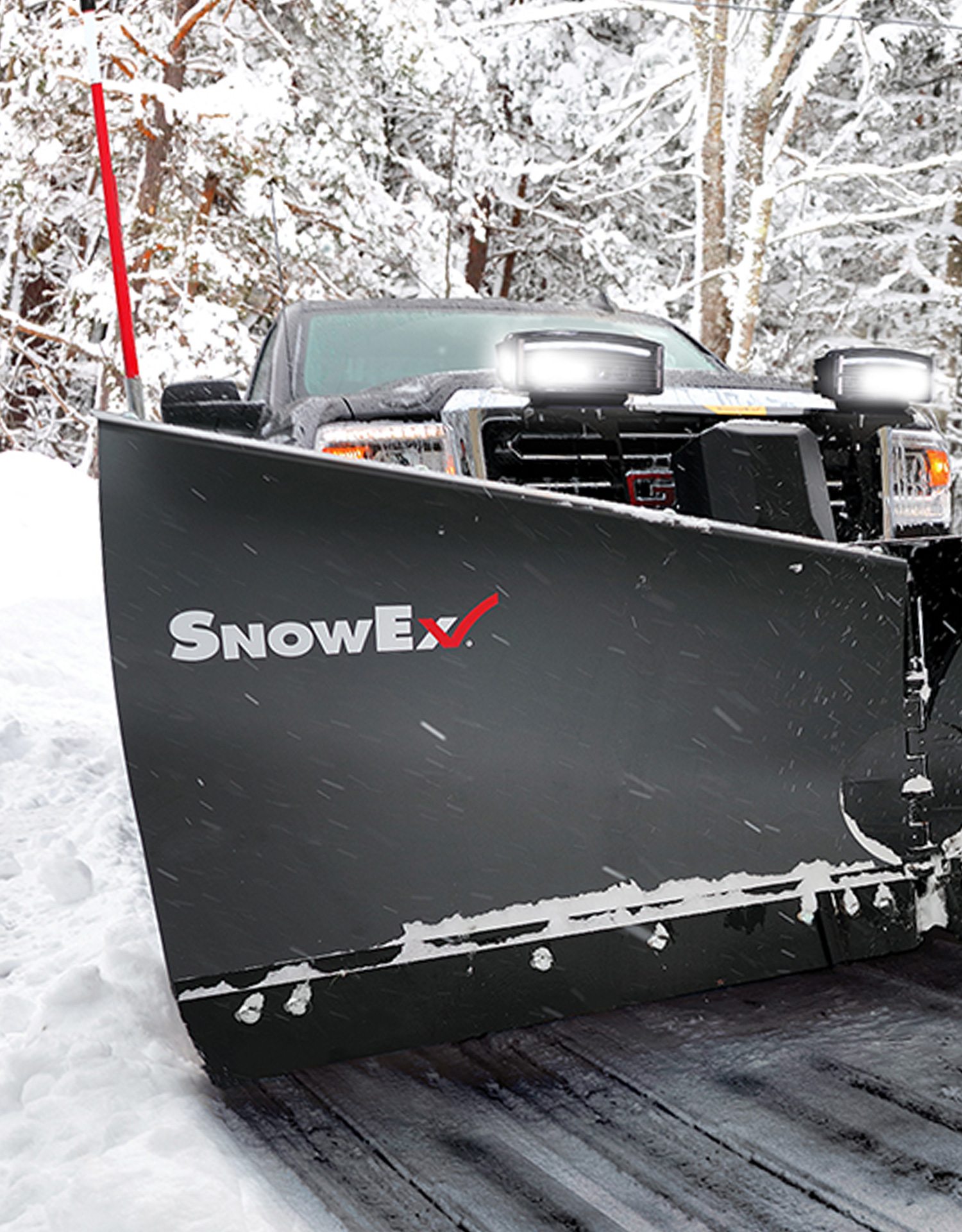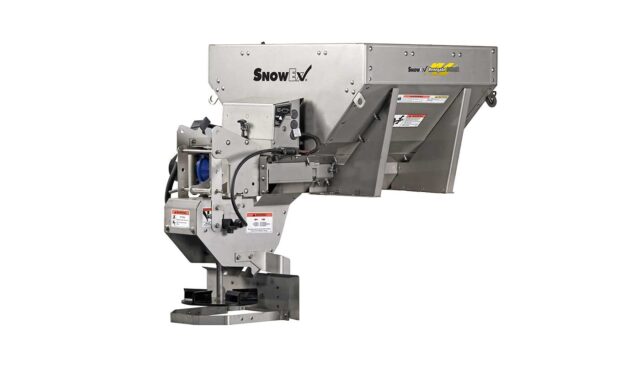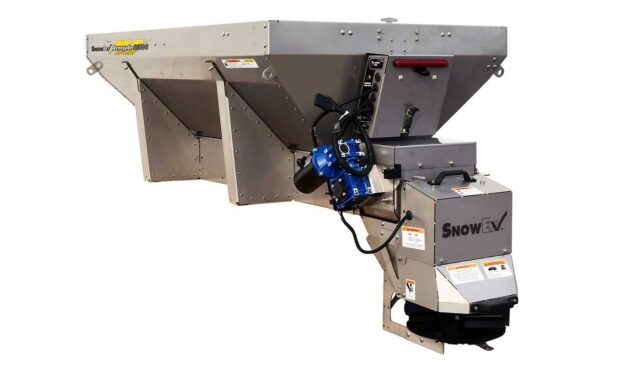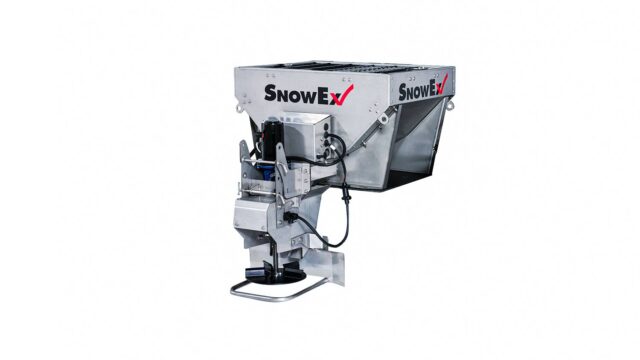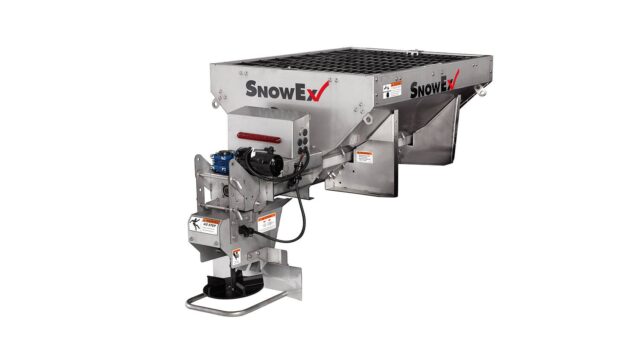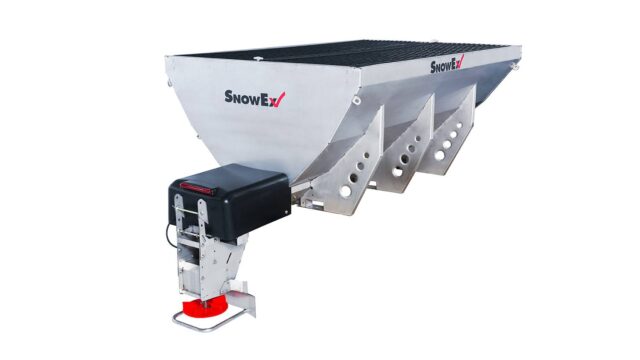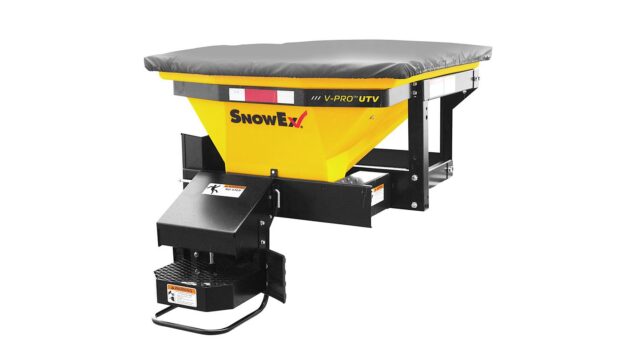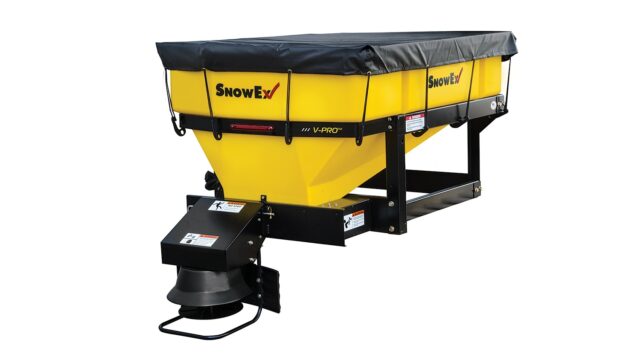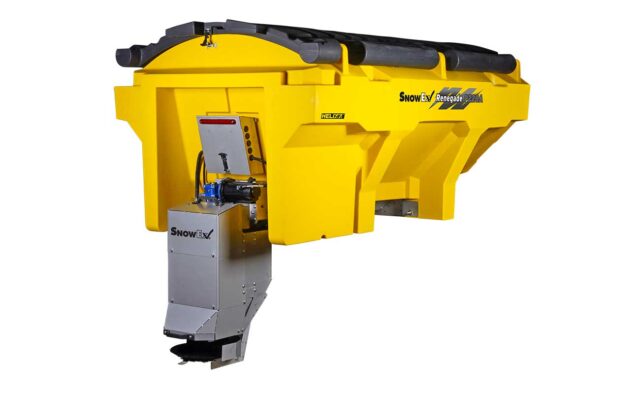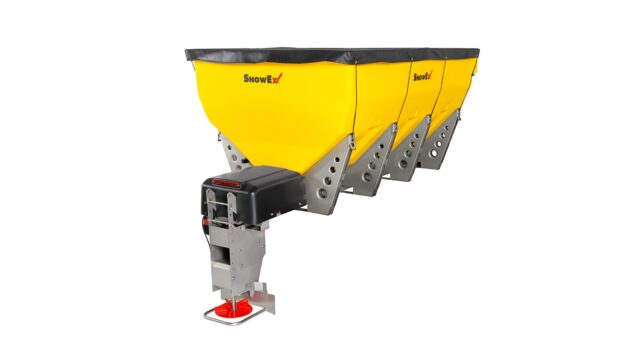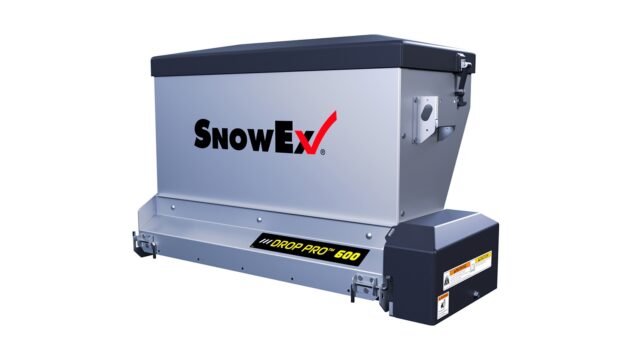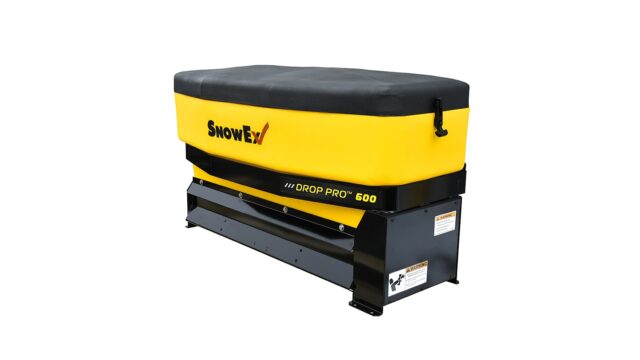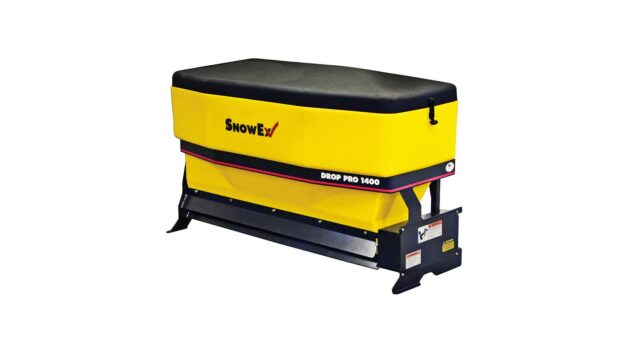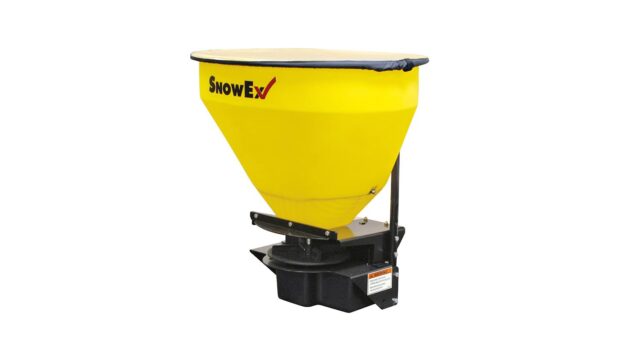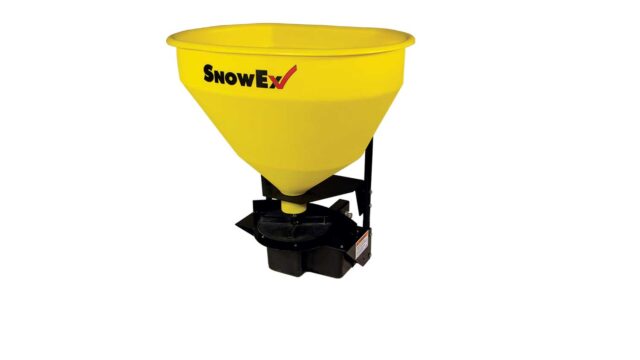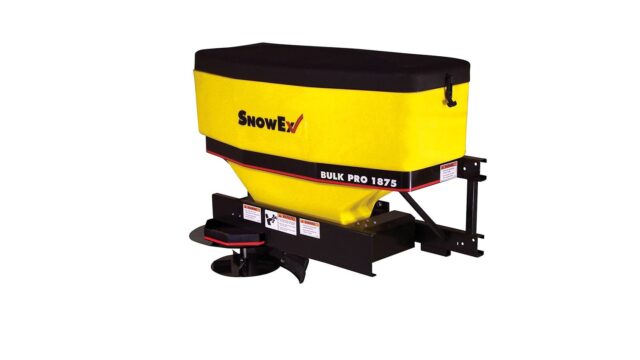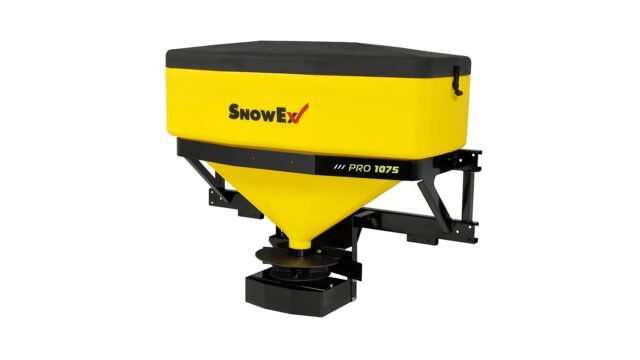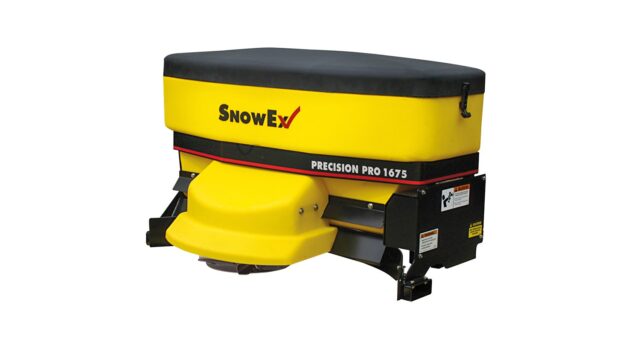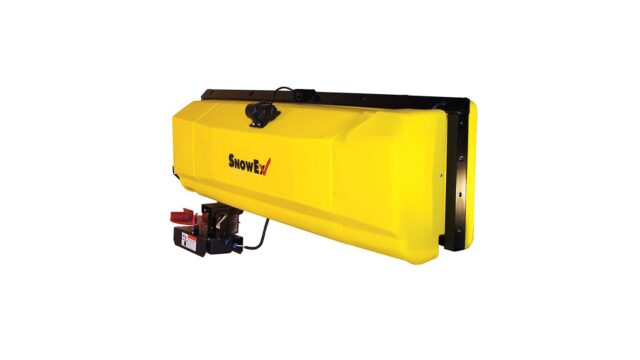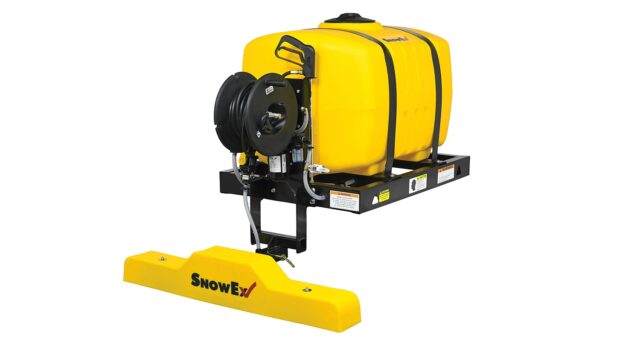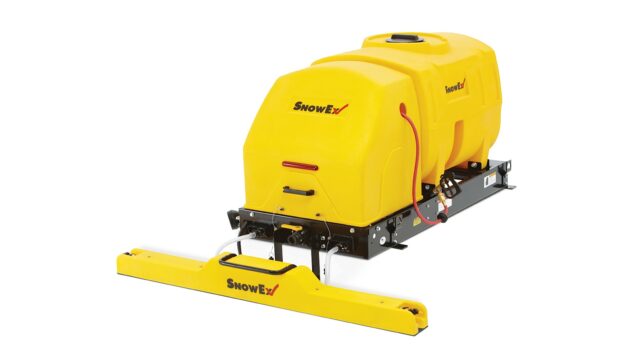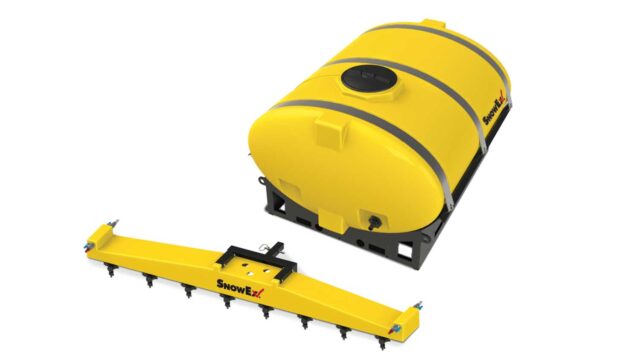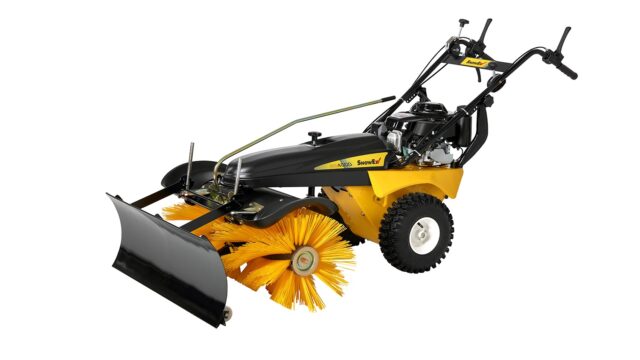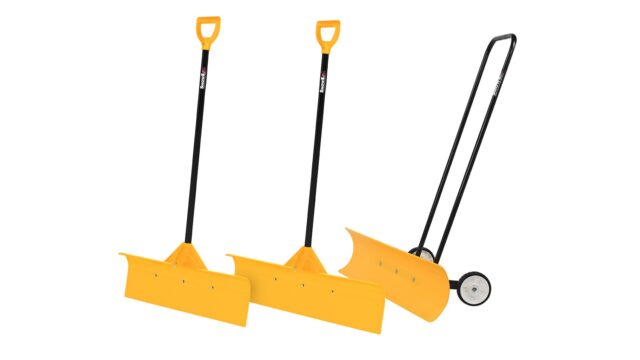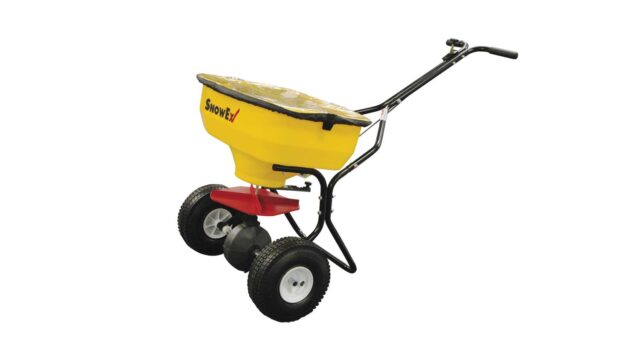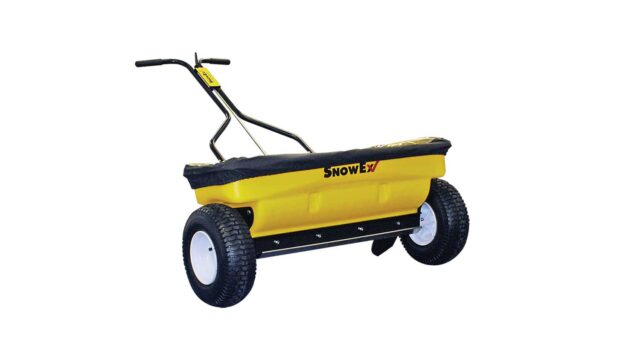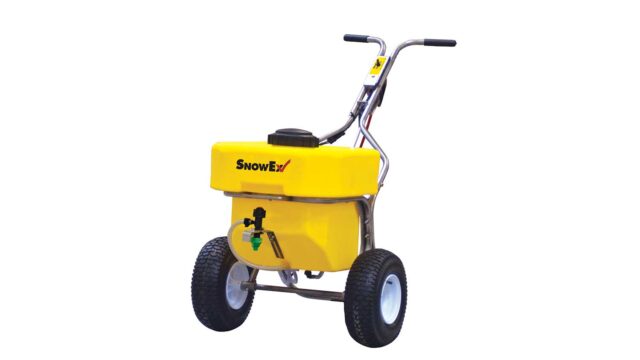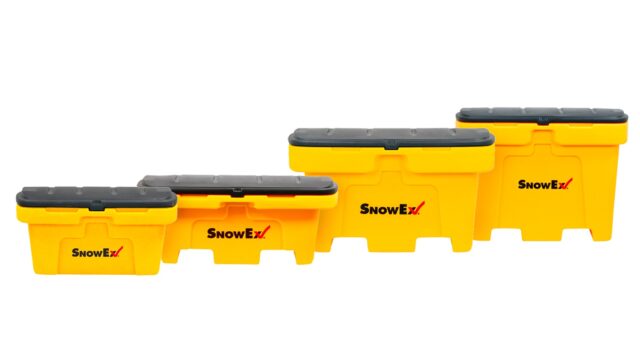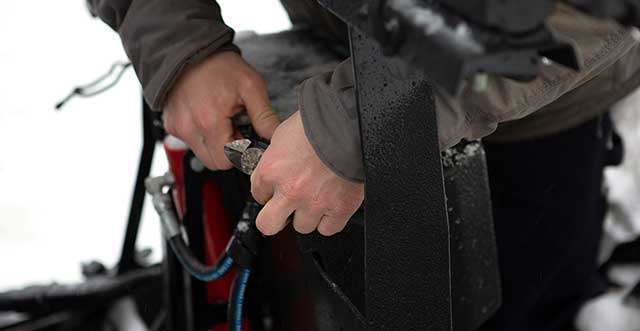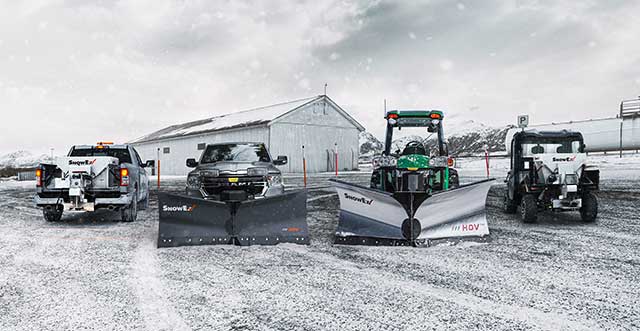Truck Considerations for Winter Maintenance Equipment
Created March 18, 2020

So, you’re ready to equip a truck for snow and ice management. You take a half-ton truck, install an eight-foot plow, throw on the largest spreader that will fit in the truck bed, and you’re ready to start making money. What else is there to consider? Actually, contractors have quite a few factors to keep in mind when they spec a truck and fit it with snow and ice equipment. Unfortunately, many don’t put much thought into the process and, consequently, their trucks are taken to an early grave—or salvage yard.
Most contractors understand that it’s simply the nature of the beast for winter maintenance trucks to experience a shorter lifespan than a general-purpose landscaping truck. However, many don’t think that by adding too much weight, they accelerate the aging process of a vehicle and pose a safety hazard. Just as the human body ages more quickly with stress, trucks will wear rapidly if not adequately rated for the thousands of pounds that this equipment can add. But by taking several factors into consideration, contractors can choose proper equipment to extend the service life of their trucks, operate more safely and avoid giving the phrase “overhauling your truck” a different meaning.
Watching Your Vehicle Weight
Imagine the weight that can be added to a vehicle through new equipment. A 7.5-foot, steel-bladed plow, for instance, may add 850 pounds to the front end of a truck, which is already burdened by the weight of the engine. Even more, a spreader with a capacity of just one cubic yard can weigh more than 1.5 tons when fully loaded. Additionally, if a liquid deicing system is installed, an extra 10 pounds per gallon is added to the weight of the vehicle, so a 200-gallon tank filled with brine contributes another ton. That doesn’t even take into account the weight of the equipment itself.
By looking at the numbers, it’s easy to see why even the tough standards of today’s trucks can’t stand up to the abuse that some contractors put them through. However, some of the worst damage could be prevented if only the contractor didn’t overlook the gross vehicle weight rating (GVWR) of the truck. This number represents the maximum weight that a vehicle’s suspension can support (including the weight of fuel, passengers and the vehicle itself). It is typically labeled in the doorframe or under the hood of a truck, as well as stated in the owner’s manual. Possibly the most important factor in fitting snow and ice equipment, the GVWR can literally make or break a truck.
Shedding Unnecessary Pounds in Equipment Capacity
First, let’s consider the snow and ice equipment. Contractors generally gravitate toward the largest equipment available, assuming it will allow them to be most efficient. Not helping the cause, salesmen often encourage the sale of larger equipment with higher profit margins, especially if the product is already in their inventory. By ignoring the specs, it’s possible for a contractor to exceed his truck’s GVWR even before loading the hopper with salt. Let’s take a simple example of a three-quarter-ton truck:
GVWR of truck: 8,600 lbs
Weight of truck (including fuel): 6,000 lbs
Weight of operator: 200 lbs
By subtracting the weight of the truck and operator from the GVWR, the remaining capacity equals 2,400 pounds (assuming there are no other accessories to factor in). A large plow could subtract another 1,000 pounds from the GVWR, and after installing an 800-pound, 2-cubic-yard spreader, the contractor only has 600 more pounds to work with—certainly not enough to fill the spreader with material or add a sprayer.
To avoid such circumstances, contractors must think things through ahead of time. Especially with spreaders, they must consider the number, size and location of the accounts serviced before buying one. A few small accounts obviously don’t require the spreader capacity needed with multiple large commercial properties. Also, some may buy larger spreaders just so they can purchase their salt cheaper from a salt yard, rather than buying pallets of bagged materials. However, if the salt yard is located on the other side of town from one’s accounts, the expense of driving to the yard may negate the material cost savings. In this case, the contractor’s best option may be a smaller, lighter tailgate spreader, which he refills with bagged material stored in his own garage or shop.
In recent years, plow and spreader manufacturers have helped reduce weight concerns by constructing their equipment with durable, lightweight materials. For example, Lexan®, a material originally used in the visors of space helmets, has become a popular material in plows. Also, many contractors are buying spreaders made of polyethylene, which can reduce the empty weight of a spreader by as much as 40 percent when compared with similar steel-constructed units.
Furthermore, many contractors are complementing their spreaders with liquid tanks that allow them to perform pre-wetting and anti-icing treatments. Of course, these tanks can add a lot of weight when filled with brine, but they’ll really wreak havoc on the truck if they don’t include baffles. When a truck brakes, thousands of pounds of momentum from the liquid is still moving forward. If the tanks aren’t equipped with baffles to diffuse the momentum, the result is a surge that puts extreme stress on the brakes and transmission, as well as the operator.
Supporting the Additional Weight of Snow & Ice Control Equipment
While keeping the equipment in mind, it’s time to consider the backbone of a winter maintenance vehicle—the truck. Obviously, a contractor has most control when looking to purchase a new truck for this type of work, rather than repurposing an existing one. But whether a contractor already owns a truck or plans to spec a new one, several steps can be taken to make sure this workhorse of the operation doesn’t break down before the final furlong.
- The first decision to make when looking for a truck is the size. Will a half-ton pickup suffice, or is a one-ton truck required? Will the spreader fit in a short bed, or does a long bed work best? As with the equipment, truck size depends on the number, size and location of accounts. Also, a contractor may choose a long bed if extra shovels, tools or liquid tanks will be stored in the box. Ideally, a contractor should search for the smallest truck that has an adequate GVWR to handle all the equipment needed to service his accounts. This provides the perfect balance of capability and efficiency.
- After deciding truck size, a contractor has options to toughen it up. The most important option to ask for when purchasing a new truck is the snowplow prep package. Appropriately titled, this kit prepares a truck for a life of tough winter maintenance. It generally includes a transmission cooler and a heavy-duty suspension, battery and alternator.
- While a heavy-duty battery works great for electric-powered plows and spreaders, hydraulically powered equipment needs the truck to contain a central hydraulic system. Without that, contractors are limited to equipment powered by either electric motors or engines. Otherwise, they are required to plumb their truck with hydraulics, which is an expensive and time-consuming process.
- Another decision is the option of a gasoline or diesel engine. Many are switching to diesel trucks, but these engines can weigh several hundred pounds more than a comparable gasoline one. By pairing a diesel engine with a heavy plow, a contractor may increase the chances of front-end damage, which is already common among winter maintenance vehicles.
- Next comes the choice of a manual or automatic transmission. Traditionally, many have opted for a manual to avoid the transmission problems commonly associated with winter maintenance vehicles. However, automatic transmissions are becoming more popular as manufacturers make them more durable than ever. As the number of inexperienced stick shift drivers increases, so does the number of burned-up clutches, and trucks with manual transmissions are consequently starting to spend more time in the shop than automatics.
Finally, a contractor has the choice of rear-wheel drive versus four-wheel drive. This decision is largely left up to personal preference. Some will never go without four-wheel drive, while others find it unnecessary. A one-ton truck with dual rear tires and a hopper full of salt should provide plenty of traction. However, four-wheel drive becomes more helpful with half- or three-quarter-ton pickups. While it does require additional maintenance, four-wheel drive ensures traction when plowing six or more inches of snow. And if a contractor usually plows near cars, it provides extra control to help prevent property damage. Like the heater in a car, this feature may not always be needed, but it’s nice to have available when things get a little icy.
If a contractor chooses four-wheel drive, he has one more commonly overlooked decision to make: manually locking hubs or automatically locking hubs. While manual hubs may seem archaic (and many dealers don’t even have them on the lot), they require less maintenance than the convenient automatic hubs. When a driver shifts from reverse to drive, automatic hubs disengage and engage again, whereas manual hubs stay engaged. If the driver fails to make a complete stop before shifting from reverse to drive, an automatic hub will grind as it tries to lock while the wheel spins. The hub can wear quickly with the number of times plow drivers change direction—especially when they often don’t make a complete stop.
When a contractor isn’t buying a new truck, but rather beefing up an existing one for winter maintenance, aftermarket parts are available to help it bear the burden. For example, heavy-duty springs provide support to the truck’s suspension, helping to prevent tie-rod damage, alignment issues and other front-end problems. Tires are another important upgrade since they have extra tonnage to support. It’s a good idea to change the tires while they’re still within the legal tread limit in order to prevent costly blowouts on the job. Additionally, some contractors will buy a battery with higher capacity to provide plenty of power to their electric plows and spreaders. That’s a good idea—as long as they don’t forget that a better battery also requires a heavy-duty alternator to charge it.
All Things Considered With Snow & Ice Control Vehicle Weight
After matching equipment to a truck, several more accessories can help a contractor operate safely and efficiently. First, a contractor must ensure that the equipment is secured to the truck with proper hardware. For example, spreaders should be bolted to the truck bed and then tied down with ratchet straps for added safety. Contractors who fail to bolt a unit down literally risk losing their spreader off the back of the truck.
Next, the truck must be equipped with proper lighting. A caution light on the truck is needed when going out on any job, and when spreading or spraying, work lights help the operator see the application for increased accuracy and safety. This also helps save money by reducing material waste. To help prevent property or equipment damage, end markers will allow an operator determine the edges of the plow blade. Also, if the spreader is equipped with a detachable spinner, it should be removed when not in use to avoid damage from backing into objects.
Finally, the supplies that a contractor carries in the truck can be just as important as the equipment itself. Spare parts, such as hoses and couplers, should be kept handy for repairs that can be performed on the jobsite. Another useful item is a tow rope, which may not only help a contractor pull another car out of the snow, but may also get himself out of a mess. These simple practices can save a contractor a lot of money since lost time equals lost business.
All things considered, from a truck’s transmission to its caution light, fitting a truck with winter maintenance equipment requires careful thought from the contractor. Although manufacturers have made technological advances in reducing the weight of plows, spreaders and other accessories, this equipment still places substantial strain and thousands of pounds on a truck. Contractors must factor in GVWR to properly outfit a truck, and even further consideration is needed to set it up for safe operation. If people ignore the specifications, their winter maintenance trucks will experience shorter than normal service life. But if more thought is put into the outfitting process, the trucks will spend more time making money and less time wasting it in the shop.
